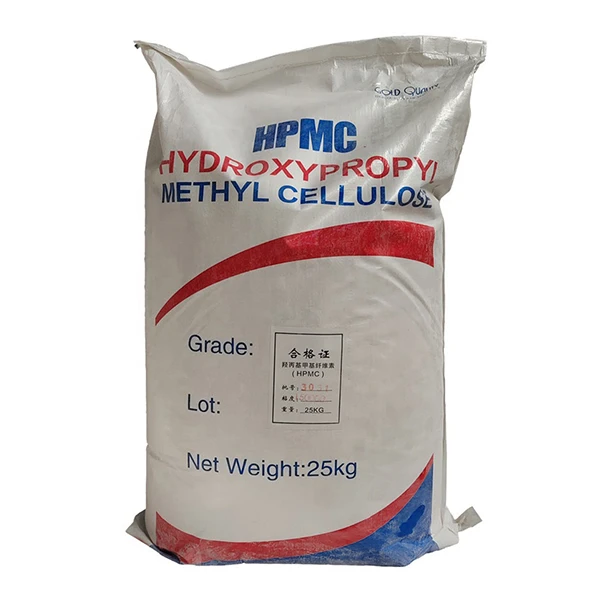The Versatile World of Hydroxypropyl Methyl Cellulose (HPMC)
Hydroxypropyl Methyl Cellulose (HPMC) is a cellulose ether that has garnered attention across various industries for its remarkable properties and versatility. As a non-ionic polymer derived from cellulose, HPMC is synthesized through a series of chemical processes involving hydroxypropylation and methylation. This multifaceted compound plays a critical role in a plethora of applications, from pharmaceuticals and food production to construction and personal care products.
Composition and Properties
HPMC is characterized by its unique chemical structure, which consists of hydroxypropyl and methyl groups attached to the cellulose backbone. This modification enhances the solubility and water-retention properties of cellulose, making HPMC an exceptional choice for various formulations. It is widely recognized for its high viscosity, film-forming ability, and thermal stability. One of its most notable features is its capacity to form gels and provide improved texture in numerous products.
The solubility of HPMC varies based on its degree of substitution, which refers to the number of hydroxypropyl and methyl groups attached. HPMC can be designed to dissolve in cold or hot water, allowing manufacturers to tailor its functionality to meet specific needs. Its processability and ability to create stable emulsions further contribute to its widespread use.
Applications in Pharmaceuticals
In the pharmaceutical industry, HPMC is primarily utilized as a binder and excipient in tablet formulations. Its excellent film-forming properties enhance the stability and integrity of tablets, ensuring that active pharmaceutical ingredients (APIs) are effectively delivered in a controlled manner. Additionally, HPMC is widely used in sustained-release formulations, where it controls the release rate of medications over time.
Moreover, HPMC serves as a thickening agent and stabilizer in various formulations, including creams, gels, and liquid medicines. Its compatibility with a wide range of substances allows it to be effectively incorporated into diverse medicinal products, improving their consistency and usability.
Food Industry Applications
hydroxypropyl methyl cellulose (hpmc)

The food industry has also embraced HPMC for its functionality as a food additive. It acts as a thickening agent, emulsifier, and stabilizer, improving the texture and appearance of food products. HPMC is commonly used in sauces, dressings, and bakery products, where it provides viscosity and helps maintain the desired consistency.
In gluten-free products, HPMC plays a vital role by mimicking the properties of gluten, contributing to the elasticity and texture of baked goods. Its ability to retain moisture also helps extend the shelf life of various food items, making it a valuable ingredient in food formulation.
Construction and Building Materials
Beyond these industries, HPMC is a key component in construction materials. In dry-mix mortars, such as tile adhesives and plaster, HPMC enhances workability and water retention. This property allows for improved adhesion and longer open time during application, ensuring better performance in construction projects. HPMC also contributes to the durability and flexibility of building materials, making it an essential additive in the construction field.
Personal Care Products
HPMC is extensively utilized in the formulation of personal care products. Its thickening properties make it a common ingredient in lotions, shampoos, and other cosmetic formulations, providing the desired texture while improving product stability. Furthermore, HPMC acts as a film-forming agent in various beauty products, enhancing their adherence and performance on the skin.
Conclusion
Hydroxypropyl Methyl Cellulose (HPMC) serves as a quintessential example of a versatile polymer that touches various facets of everyday life. From enhancing the efficacy of pharmaceuticals to improving food texture and performance in construction materials, HPMC's unique properties and adaptability make it an invaluable component across multiple industries. As research continues and new applications are discovered, the potential of HPMC is expected to grow even further, solidifying its place as a critical material in modern formulations and products.
-
The Application and Significance of Construction RdpNewsMay.19,2025
-
Industrial Grade HpmcNewsMay.19,2025
-
Building Coating Adhesive Building Coating Adhesive HpmcNewsMay.19,2025
-
Application Of Hpmc For Detergent For Detergent In DetergentsNewsMay.19,2025
-
Application Of Hpmc Cellulose In Cement-Based MaterialsNewsMay.19,2025
-
Application Of High Quality Hpmc For Construction In The Field Of ConstructionNewsMay.19,2025




